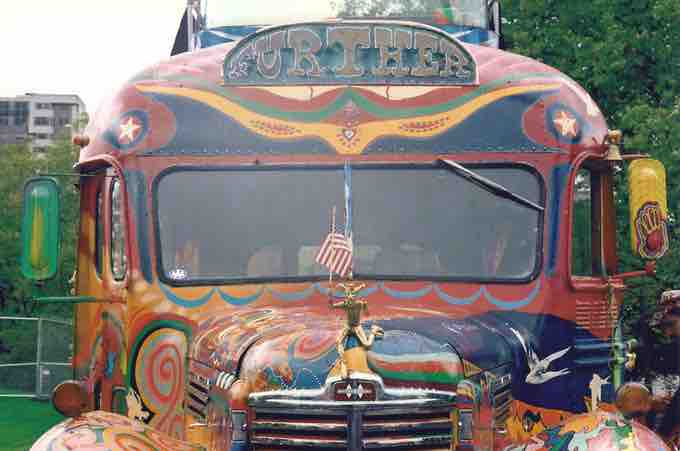Hippies and the Summer of Love
In 1967, musician Scott McKenzie's rendition of the song "San Francisco (Be Sure to Wear Flowers in Your Hair)" brought as many as 100,000 young people from all over the world to celebrate a "Summer of Love" in San Francisco's Haight-Ashbury neighborhood. The Summer of Love became a defining moment in the 1960s as the hippie counterculture movement came into public awareness.
San Francisco was the center of the hippie revolution; during the Summer of Love, it became a melting pot of music, psychedelic drugs, sexual freedom, creative expression, new forms of dress, and politics. This unprecedented gathering of young people is often considered to have been a social experiment because of the alternative lifestyles that became common. These lifestyles included communal living, the free and communal sharing of resources (often among total strangers), and the idea of free love. When people returned home from the Summer of Love, these styles and behaviors spread quickly from San Francisco and Berkeley to many U.S., Canadian, and even European cities.
Some hippies formed communes to live as far outside of the established system as possible. This aspect of the counterculture rejected active political engagement with the mainstream; following the dictate of a Harvard LSD proponent, Dr. Timothy Leary, to "Turn on, tune in, drop out," it hoped to change society by dropping out of it. As members of the hippie movement grew older and moderated their lives and their views, and especially after U.S. involvement in the Vietnam War ended in the mid-1970s, the counterculture was largely absorbed by the mainstream, leaving a lasting impact on philosophy, morality, music, art, alternative health and diet, lifestyle, and fashion.
Drug Use in the Hippie Counterculture
Experimentation with LSD, Peyote, psilocybin mushrooms, MDA, marijuana, and other psychedelic drugs became a major component of 1960s counterculture, influencing philosophy, art, music, and styles of dress. Casual LSD users expanded into a subculture that extolled the mystical and religious symbolism often engendered by the drug's powerful effects, advocating its use as a method of raising consciousness. The personalities associated with the subculture—including Dr. Leary as well as psychedelic rock musicians such as the Grateful Dead, Jimi Hendrix, the Doors, and the Beatles—soon attracted a great deal of publicity, generating further interest in LSD.
Ken Kesey and the Merry Pranksters
The popularization of LSD outside of the medical world was hastened when individuals such as Ken Kesey participated in drug trials. Ken Kesey and his Merry Pranksters helped shape the developing character of the 1960s counterculture during the summer of 1964 when they embarked on a cross-country voyage in a psychedelic school bus named "Further."
Beginning in 1959, Kesey had volunteered as a research subject for medical trials that tested the effects of LSD, psilocybin, mescaline, and other psychedelic drugs. After the medical trials, Kesey continued experimenting on his own and involved many close friends; collectively they became known as "The Merry Pranksters." The Pranksters visited Dr. Leary at his Millbrook, New York retreat. Experimentation with LSD and other psychedelic drugs, primarily as a means for internal reflection and personal growth, became a constant during the Prankster trip.
The Pranksters created a direct link between the 1950s Beat Generation and the 1960s psychedelic scene. The bus was driven by Beat icon Neal Cassady, Beat poet Allen Ginsberg was onboard for a time, and they dropped in on Cassady's friend, Beat author Jack Kerouac.

"Further"
The famous bus that Ken Kesey and the Merry Pranksters used to travel across the country.